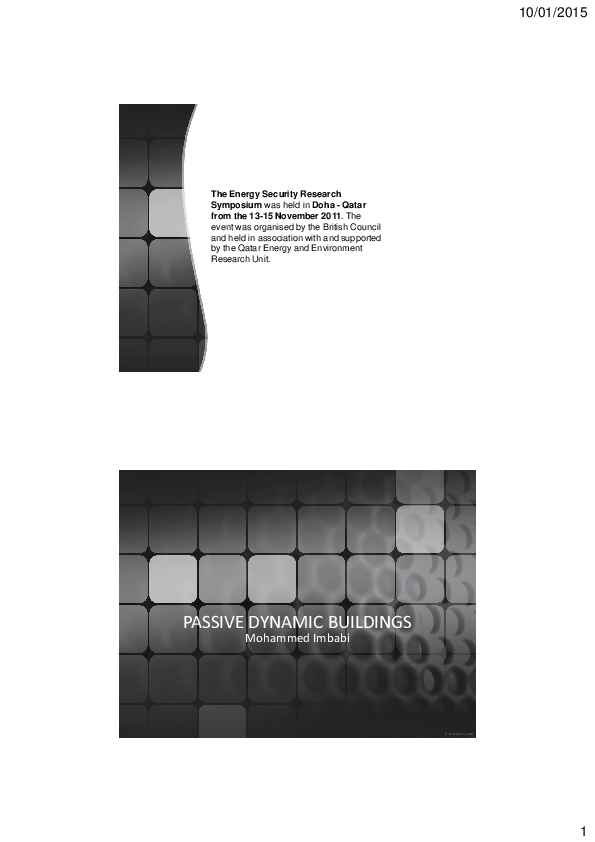Academia.edu no longer supports Internet Explorer.
To browse Academia.edu and the wider internet faster and more securely, please take a few seconds to upgrade your browser.
Passive Dynamic Buildings
Related Papers
International Journal of Sustainable Built Environment
A passive-active dynamic insulation system for all climates2012 •
Buildings present both a major impediment to reducing our reliance on the burning of dwindling reserves of fossil fuel and a real opportunity for achieving significant reduction in global carbon emissions. Dynamic facade, using Dynamic Insulation (DI), is an energy-efficient method of supplying pre-tempered filtered ventilation air to a building through an air-permeable dynamically insulated envelope or facade. One of the important features of DI is that it effectively decouples ventilation rate from energy use. In theory, it should work well with all buildings, including homes, schools, offices and sports facilities where high occupancy is the norm. This paper investigates the use of DI in a building facade for zone local insulation and ventilation. The savings in energy and CO 2 reduction are quantified against existing standards in the Gulf Region. The results show that DI can provide tempered fresh air, raise energy efficiency and reduce air conditioning energy demand without co...
2012 •
International Journal of Sustainable Built Environment
Modelling the thermal energy demand of a Passive-House in the Gulf Region: The impact of thermal insulation2012 •
RELATED PAPERS
Cronaca del Seminario di formazione in Storia religiosa e Studi francescani (Assisi, 25 giugno – 6 luglio 2023)
Cronaca del Seminario di formazione in Storia religiosa e Studi francescani (Assisi, 25 giugno – 6 luglio 2023)2024 •
ZPE 223, 2022, 227–230
EIN DIPLOM AUS DEM JAHR 238 FÜR EINEN PRÄTORIANER AUS ANCHIALUShttps://servicioskoinonia.org/relat/449.htm
RELaT nº 449, ARREGI, José – «Mi itinerario teológico»: Un balance a los 65 años.Springer eBooks
When Spirituality Becomes Spiritual Labour: Workplace Mindfulness as a Practice of Well-Being and Productivity2022 •
International Journal of Business and …
Performance Evaluation of Selected Private Commercial Banks in Bangladesh2009 •
ILLAPA Mana Tukukuq 2017, 14 (14): 72-83 Revista del Instituto de Investigaciones Museológicas y Artísticas de la Universidad Ricardo Palma
La ciudad en el museo. La ciudad musealizada. Los museos de ciudad. Discursos museográficos de ciudadanía y corresponsabilidad.2023 •
Tesis de Licenciatura
Organización territorial y espacial en el Valle Medio de Cañete durante el Horizonte Tardío2024 •
Journal of Petroleum Science and Engineering
Influence of wettability on water saturation modelling1999 •
Fems Microbiology Letters
Conjugal transfer of aminoglycoside and macrolide resistance between<i>Enterococcus faecium</i>isolates in the intestine of streptomycin-treated mice2004 •
Journal of public policy and administration
Peaceful Coexistence in Compassionate Conservation: A Policy Discourse Analysis2024 •
2010 •
2014 •
Chemistry of Materials
Growth of Microscale In2O3 Islands on Y-Stabilized Zirconia(100) by Molecular Beam Epitaxy2008 •
2019 •
- Find new research papers in:
- Physics
- Chemistry
- Biology
- Health Sciences
- Ecology
- Earth Sciences
- Cognitive Science
- Mathematics
- Computer Science

 Mohammed Imbabi
Mohammed Imbabi